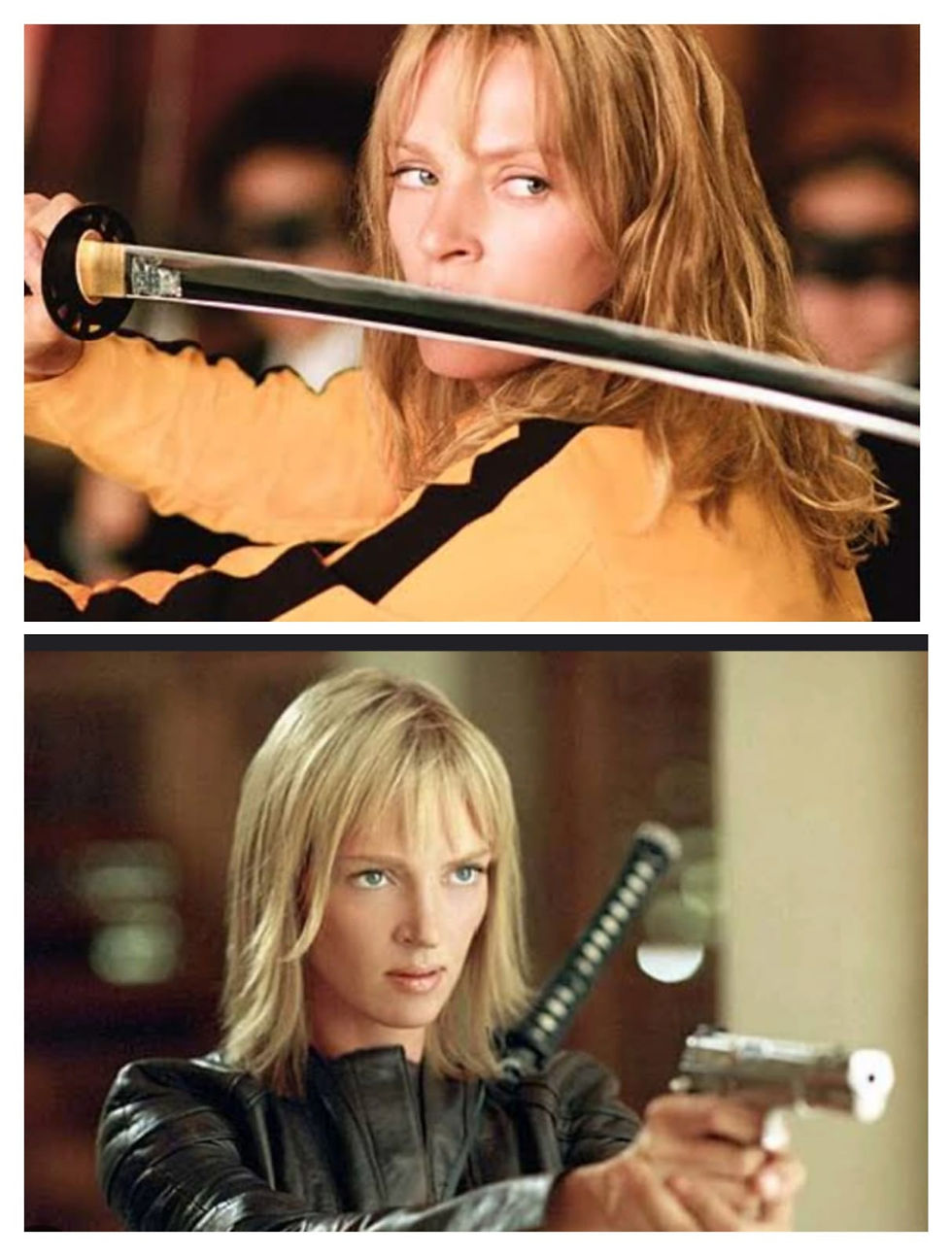Kill Bill 1 And 2 Review (2003-2004)
- aadeshtheking06
- Jul 22, 2023
- 3 min read

Kill Bill Vol 1 has one of Tarantino’s most emotional emotional opening sequence which shows The Bride, played by a show stopping Uma Thurman, bruised deeply lying as Bill speaks to her. He tells how he feels about her and just as she makes the revelation that he’s the father of her baby, he shoots her and the title card comes up with the music of Nancy’s Sinatra’s “Bang Bang My Baby Shot Me Down”. The opening unlike any of his films (with the exception of Deathproof, which iam about to see) is one of Tarantino’s most emotional, gut wrenching ones, something I cannot tell for many of his films.
The cold calculating mind of Hans Landa in the opening of Inglorious Basterds, The Cool banter between Pumpkin and Honey Bunny or the Pop Culture Disertion Of Reservoir Dogs thrive on intellectual attraction, taking you in by the way stuff happens. But here Tarantino makes us feel directly for The Bride, when in the cold, sad Black And White images we see her battered face. It is something he again repeats with Vol 2 wherein, after a short movie recap style fourth wall breaking by the Bride, we see the chapter (As usual, Tarantino has broken his films into chapters, and they continue order wise in Vol 2 i.e. the first chapter in Vol 2 is Chapter 6). Here we see the same massacre which led to the moment of Vol 1’s opening, except here Tarantino, lays the groundwork for the opening sequence in Inglorious Basterds opening sequence. Similar to that, we have here dialogue driven scenes which finally lead to the opening of Vol 1. But Tarantino exhibits a certain restraint here, instead of showing the blood splattered, he long takingly, deceives The Bride (and us) by showing that all is right but then backing up to reveal the violence about to exercised.
With Jackie Brown, I had thought that Tarantino had finally done something that functions not merely on the basis of style, but also on the basis of the atmosphere, the little inner moments and of course the wonderful characters. What he does here is makes the first Volume seem like the First 2 of his films (not in the talky way, but stylistically) and Vol 2 like Jackie Brown. By that what I mean is that Kill Bill 1 functions more on style; we have an animated sequence showing the backstory of a villain, we literally have a blood pool, there is a vehicle called the Pussy Wagon. But what here is also the brilliantly choreographed fight sequences which maybe less in quantity (3 major setpieces) but the in-between portions sparkle beautifully.
We see a sequence where The Bride has to buy a katana from a legendary sword maker Hatori Hanzo and the scene she sees all of his katanas as she slowly caresses and feels them as the camera slowly and caringly tracks her is absolute bliss. Tarantino knows the fetisisation of weapons here and gives us an absolute tender moment as if a mother is meeting her child. And this is another subplot which leads to one of Tarantino’s most humane sequences ever: the last 50 odd minutes of Vol 2 where Bill and The Bride finally meet and she learns her kid is still alive.
What follows is a heart-breaking breaking of a probably beautiful romance but the revelation, though predictable, fascinate as they arrive after we pretty much get to fully know Bill. Uma and David Carradine, as Bill, have a chemistry so warm and tender it makes us want to see their lives before their sad breakup. Even the scene where the Bride learns of her pregnancy and the way she uses it to avoid getting killed is written with extreme care, so as to emphasise how she has changed after becoming a mother. The soundtrack, arguably one of Tarantino’s best compiled, except for The Hateful Eight’s majestic score by Ennio Morricone, whose own Music from The Fistful of Dollars makes an appearance here. The shift in music during the fight scenes themselves is similar to the various shifts to the movies that Tarantino seems to be giving homage to. The particularly bloody and brilliant “Showdown at the House of Blue Leaves” is like a Hong Kong Film but the succeeding fight with O Ren Ishii is like a Japanese Samurai Fight.
Many say Tarantino returned to familiar grounds post the dismal performance of Jackie Brown in the box office, but it is with Kill Bill (both are a single film released separately due to length issues), that Tarantino has achieved a perfect marriage of his writing depth and his cinephilia.




Comments